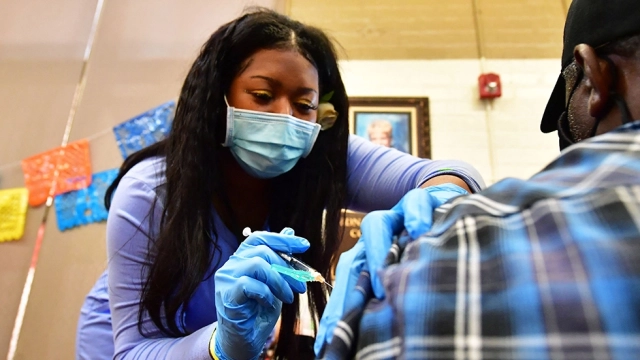Health Care — Health officials eyeing subvariant
10 January, 2023

The Buffalo Bills are encouraging their fans to show support for Damar Hamlin — the Bills’ safety who collapsed on the field last week after suffering cardiac arrest — by learning CPR.
Today in health, the XBB.1.5 omicron subvariant has swept across the Northeast and while data is limited, health officials have shared some important details on the mutation.
Welcome to The Hill’s Overnight Health Care roundup, where we’re following the latest moves on policy and news affecting your health. We’re Nathaniel Weixel and Joseph Choi. Someone forward you this newsletter?
What we know about the XBB.1.5 subvariant
The XBB.1.5 omicron subvariant is raising concerns of a potential surge in COVID-19 cases as it sweeps across the Northeast.
Officials have warned in recent weeks that the strain is highly transmissible, can more easily evade the immunity offered by vaccines or prior infections than past variants and is likely to drive cases up around the country.
- The subvariant has already rapidly spread in the Northeast, where it is currently estimated to be causing about 72 percent of infections.
- But while another omicron subvariant, BQ.1.1, is still dominant in the country beyond the Northeast, XBB.1.5 has also reached all other regions of the U.S., and officials predict it will continue to spread. Due to its recent ascent, data on XBB.1.5 is limited, but health officials have disclosed some key insights into the strain, as well as what questions remain unanswered.
Most transmissible: XBB.1.5 is “the most transmissible subvariant that has been detected yet” of the already highly contagious omicron strain, Maria Van Kerkhove, technical lead of the World Health Organization’s (WHO) COVID-19 response, said in a recent briefing.
Cases likely to rise: Food and Drug Administration Commissioner Robert Califf said when speaking about XBB.1.5 this week that he expected a further increase in cases. Treatments should still work: Ashish Jha, the White House’s COVID-19 response coordinator, said the updated bivalent COVID-19 booster is still the “best protection” against infection and severe illness
Oral antivirals like Paxlovid and molnupiravir are also still expected to be effective against XBB.1.5, as they don’t function by boosting antibodies — which the strain appears better able to evade — but by hindering the virus’s ability to replicate itself.
Guidance suggests drugs, surgery for obese kids
The American Academy of Pediatrics (AAP) has issued new guidelines for treating children and adolescents with obesity in an effort to address the growing toll of the disease on the nation’s youth.
The update, which marks the first comprehensive guidance from the AAP in 15 years on the subject, includes recommendations for different medications, along with metabolic and bariatric surgery.
It also touts a holistic approach to treating the disease by recognizing the complex genetic, physiologic, socioeconomic and environmental factors that contribute to the increased risk of obesity.
- According to the new guidelines, only those with a BMI equal to or greater than 120 percent of the 95th percentile should be evaluated for metabolic and bariatric surgery. This recommendation is also limited to youth ages 13 or older.
- Medications are only recommended as an adjunct to health behavior and lifestyle treatment in those ages 12 and older.
Obesity affects around 20 percent of children between the ages of 2 and 19 in the United States, while rates have tripled in the last 30 years. When left untreated, obesity can lead to cardiovascular diseases, diabetes, depression and other chronic conditions.
“Weight is a sensitive topic for most of us, and children and teens are especially aware of the harsh and unfair stigma that comes with being affected by it,” said Sarah Hampl, a lead author of the guideline, in a statement.
“Research tells us that we need to take a close look at families — where they live, their access to nutritious food, health care and opportunities for physical activity — as well as other factors that are associated with health, quality-of- life outcomes and risks. Our kids need the medical support, understanding and resources we can provide within a treatment plan that involves the whole family.”
Source: thehill.com
TAG(s):
